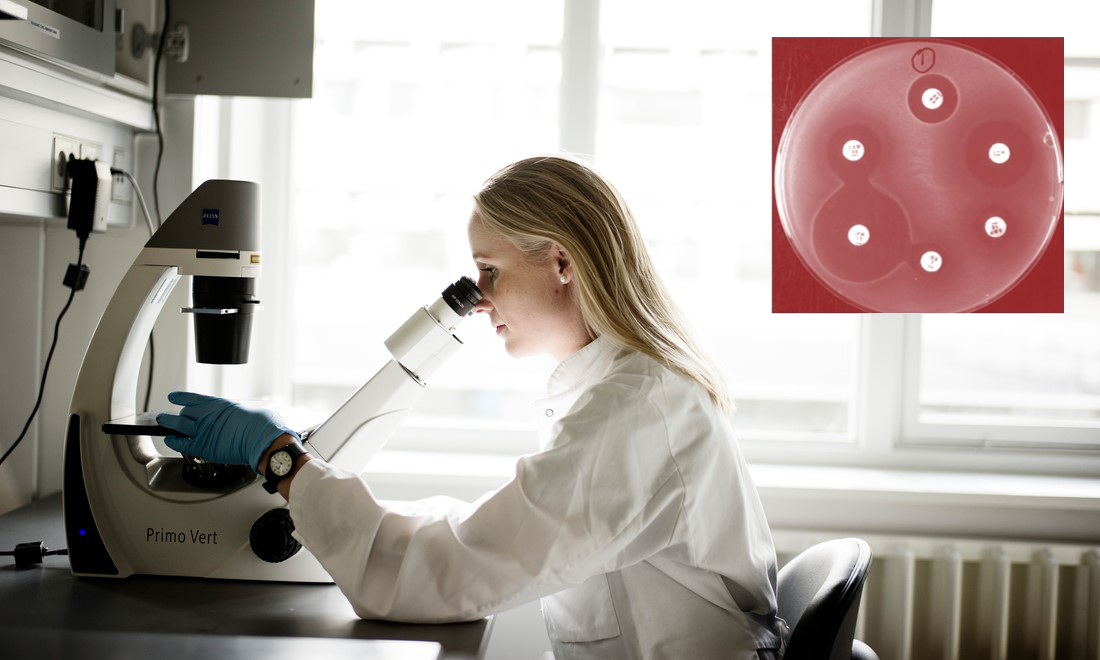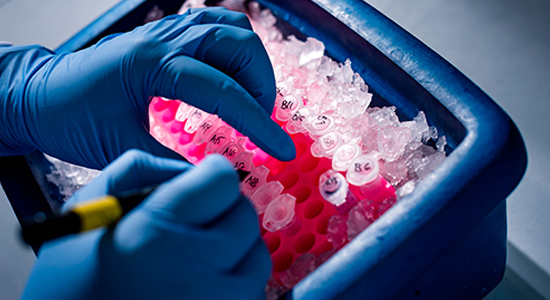PURPOSE
Cell envelope anti-bacterials, (CLEAR) will train ten young researchers in Europe to address serious and global problems of antibiotic resistance. Currently, disease-causing bacteria are becoming resistant to last resort antibiotics, and transmission of resistance genes as well as resistant pathogens is widespread between human, animal, and environmental reservoirs.
Doctoral Candidate Project overview and description
Objectives: To determine the molecular binding partner of tigacrelor by studying membrane effects and direct interactions with membrane components. New ticagrelor derivatives lacking anti-platelet activity will be compared. Clp protease mutants selected by ticagrelor exposure will be characterized biochemically and their substrate spectrum will be explored.
Expected Results: Mode of action of tigacrelor as antimicrobial compound determined.
Project description:
Infections caused by multidrug-resistant bacteria represent a critical healthcare challenge, underscoring the urgent need for new and effective treatment options. Recent findings showed that the antiplatelet drug ticagrelor, used to prevent blood clots, also possesses significant antibacterial activity. The growth of Gram-positive bacteria is effectively inhibited, including methicillin-resistant Staphylococcus aureus (MRSA).
Our preliminary research, in collaboration with the company COAT and the University of Copenhagen, revealed a novel, dose-dependent antibacterial mechanism by which ticagrelor disrupts bacterial cells. Specifically, ticagrelor compromises the properties and structural integrity of the bacterial cytoplasmic membrane, leading to bacterial cell death. Binding of ticagrelor to different phospholipids was noted. Notably, ticagrelor was not affected by cross-resistance to the important anti-MRSA drugs daptomycin and vancomycin. Whole-genome sequencing of MRSA clones, which had developed low-level ticagrelor resistance during in vitro studies, uncovered mutations in genes associated with protein quality control and stress response pathways, specifically ClpP, ClpX, and YjbH.
In my project, I aim to obtain deeper insight into the mode of action of ticagrelor and the role of the Clp protease in ticagrelor resistance. In addition, I will perform mechanistic characterization of ticagrelor derivatives to contribute to understanding the antibacterial structure-activity relationship.
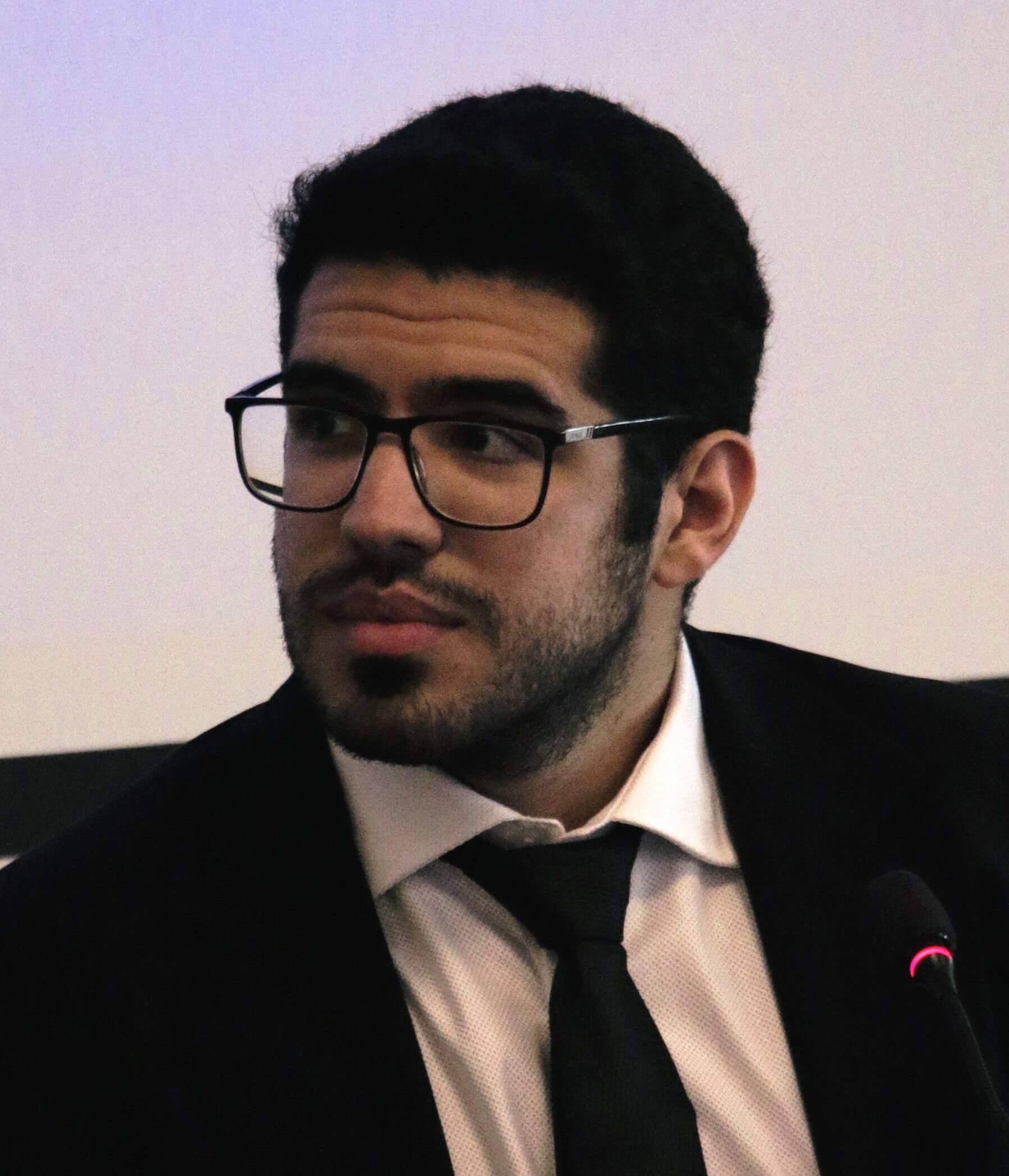 Armin Nourifar
Armin Nourifar
Education and experience:
I graduated with a bachelor’s degree in Cellular and Molecular Biology, gaining foundational knowledge and research experience. My passion for biotechnology led me to pursue a master’s in Molecular Biotechnology and Bioinformatics at the University of Milan where I gained a deeper understanding of areas like antibiotics and bioactive compounds. This interest guided me to a thesis project and internship at NAICONS, a Milan-based biotech company with a focus in microbial drug discovery as part of its broader research efforts. At NAICONS, I had the opportunity to work with rare Actinomycetes, specifically exploring the under-explored genus Dactylosporangium with the potential to produce antibiotics. During this time, we employed various techniques to isolate and analyse the produced compounds, aiming to uncover new molecules with antimicrobial activity. My thesis, titled “Rare Actinomycetes as a Source of Novel Bioactive Compounds: The Case of Dactylosporangium,” summarized the research findings and highlighted the potential of this specific genus of rare Actinomycetes as a source of new antibiotics. This research identified two novel compounds, including one with significant antimicrobial activity.
With my background in natural product research and the discovery of novel bioactive compounds, I am eager to deepen my expertise by advancing to the next critical stage in this field of research: mode of action analysis. Understanding how these compounds interact with bacterial targets is essential for gaining comprehensive insights into antibiotic mechanisms. Being part of the CLEAR consortium and working at the University of Tuebingen in the Broetz-Oesterhelt team provides me with an ideal environment to pursue this goal, offering access to advanced resources, cutting-edge research methodologies, and a collaborative team to support my development in antibiotic research and mode of action studies.
Objectives: To determine the mechanism ClpXP protease contribute to intrinsic resistance to cell wall antibiotics and the role of autolysins in killing by b-lactams.
Expected Results: 1) The molecular mechanism behind the emergence of Clp mutants emerge against clinically applied antibiotics (e.g., β-lactams, vancomycin, daptomycin) has been elucidated, 2) The role of autolysins in b-lactam mediated killing of G+ pathogens (MRSA) has been determined.
MRSA Intrinsic Resistance to β-lactams: Role of ClpXP, LtaS, and PBP1 in Control of Autolysins Education and Experience
Project Description
Antimicrobial resistance (AMR) has become a global crisis, with multidrug-resistant gram-positive bacteria posing a serious threat to public health. Among these, methicillin-resistant Staphylococcus aureus (MRSA) is particularly concerning, causing over 100,000 deaths annually. The urgent need for new therapeutic strategies is amplified by the limitations of the current antibiotic pipeline.
β-lactam antibiotics disrupt bacterial cell wall synthesis by binding to penicillin-binding proteins (PBPs) that cross-link peptidoglycan. Despite extensive research, the exact mechanism by which β-lactams kill bacteria remains unclear. The prevailing model suggests that bacterial killing is linked to the activation of autolysins, enzymes that degrade the cell wall. Autolysins are essential for cell division, but their uncontrolled activity can lead to cell lysis. Recent studies indicate that the ClpXP protease and teichoic acids (TAs) attached to either the cell membrane, LTA, or the cell wall (WTA) play critical roles in controlling the activity of autolysins and in determining resistance to β-lactams. My project aims to determine the killing the killing mechanism of β-lactam antibiotics by elucidating how ClpXP, LTA, WTA, and Penicillin Binding Proteins (PBPs) cooperate to control activity of autolysins in time and space.
My secondments will be at NAICONS (Italy) and the University of Amsterdam (Netherlands). At NAICONS, I will be involved in screening for inhibitors of teichoic acid biosynthesis. At the University of Amsterdam, I will map the interaction partners of PBP1 and enzymes involved in the biosynthesis of LTA, and WTA.
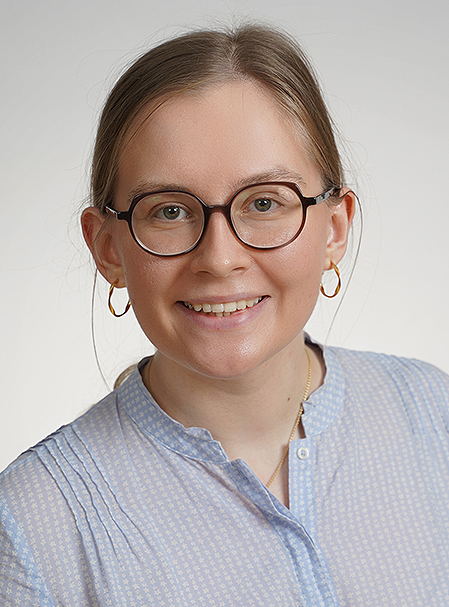 Lara-Seline Furmanowsky
Lara-Seline Furmanowsky
email: lsf@sund.ku.dk
In 2020, I graduated from University of Konstanz with a Bachelor's degree in Life Sciences. This interdisciplinary program, which included both biology and chemistry, provided me with a broad foundation in the life sciences. During my studies, I spent two semesters at the University of Toronto, Mississauga, which enriched my academic experience and broadened my perspective on biological research. My undergraduate thesis, supervised by Prof. Leist, focused on the differentiation of stem cells into nociceptors, which sparked my interest in molecular biology.
I continued my education at University of Konstanz, where I obtained a Master’s degree in Life Science. I specialized in bioinformatics and structural biology. My Master’s thesis, supervised by Prof. Drescher, involved using electron paramagnetic resonance (EPR) spectroscopy to study the structural changes in a membrane protein upon binding of its cofactor and substrate. This project allowed me to hone my skills in advanced molecular techniques and deepened my understanding of protein structure and function.
I also attended a three-week summer school at Aarhus University, focusing on psychoactive drugs in forensic medicine, which further broadened my scientific background.
During my Master’s program, I also completed a six-month internship at Boehringer Ingelheim in the Compliance and Process Technology (CPT) department, where I gained practical experience in the quality control and quality assurance of tablet packaging processes. Although not directly related to my current PhD project, this experience provided valuable insights into the pharmaceutical industry and the importance of stringent quality standards.
In June 2024, I started my PhD in the group of Dorte Frees at the University of Copenhagen as part of the CLEAR network.
Objectives: To construct a map of interactions of major cell wall proteins including the PBPs and those involved in teichoic acid synthesis.
Expected results: 1) A protein interaction map pointing to key interaction points linking cell envelope biosynthesis with central components of the cell division machinery, 2) prediction of key proteins to be mined as potential hits.
Project Description:
The rise of antibiotic resistance in bacteria has become a critical global health concern. Gram-positive bacteria often counteract on antibiotics by modifying their thick cell walls, which can prevent the drugs from reaching or acting on their intended targets. However, the bacterial cell wall remains a prime target for antimicrobials designed to disrupt its integrity. A better understanding of cell wall structure, regulation and its synthesis pathways is crucial for developing new treatments.
The aim of my project is to better understand the complex processes of cell wall biosynthesis, dynamics and cell division by creating an interaction map showing key interactions in these essential mechanisms.
My approach focuses on three main aspects: gene functions & interactions, cell wall porosity changes and pH regulation.
First, I will investigate gene functions and interactions using transposon libraries (Tn-seq). Transposons are mobile genetic elements that randomly insert into genomes and thereby disrupt genes. The Tn-seq library is a collection of those knockout mutants. It allows a functional analysis by assessing how the knocked out genes affect bacterial behavior under specific conditions. To advance this, I aim to develop a dual-knockout system combining Tn-seq and CRISPR-Cas9, which will provide insights in genetic interactions.
I will be working with the model organism Bacillus subtilis and hope to discover possible lethal interactions that can be used as novel target sites. In my collaborations I will try to synthesize inhibitors for cell wall targets and then test them in the pathogen Staphylococcus aureus.
Second, I will examine the regulation of cell wall porosity, a critical factor influencing the ability of antibiotics and other molecules to penetrate the cell wall. To understand the regulation behind porosity changes I am developing a novel fluorescence-based method that can be used to study cell wall deficient mutant strains.
Lastly, I aim to understand the role of pH gradients within the cell wall. The pH impacts the charge dynamics and overall functionality of the cell wall components. By using protein fusions with pH sensitive tags that locate at different depth in the cell wall, I will explore how pH is regulated.
Porosity and pH are both important processes for the cell wall integrity, but the regulations and mechanisms are not yet fully elucidated. Identifying regulatory genes that control these processes, are potentially new targets in the antimicrobial development.
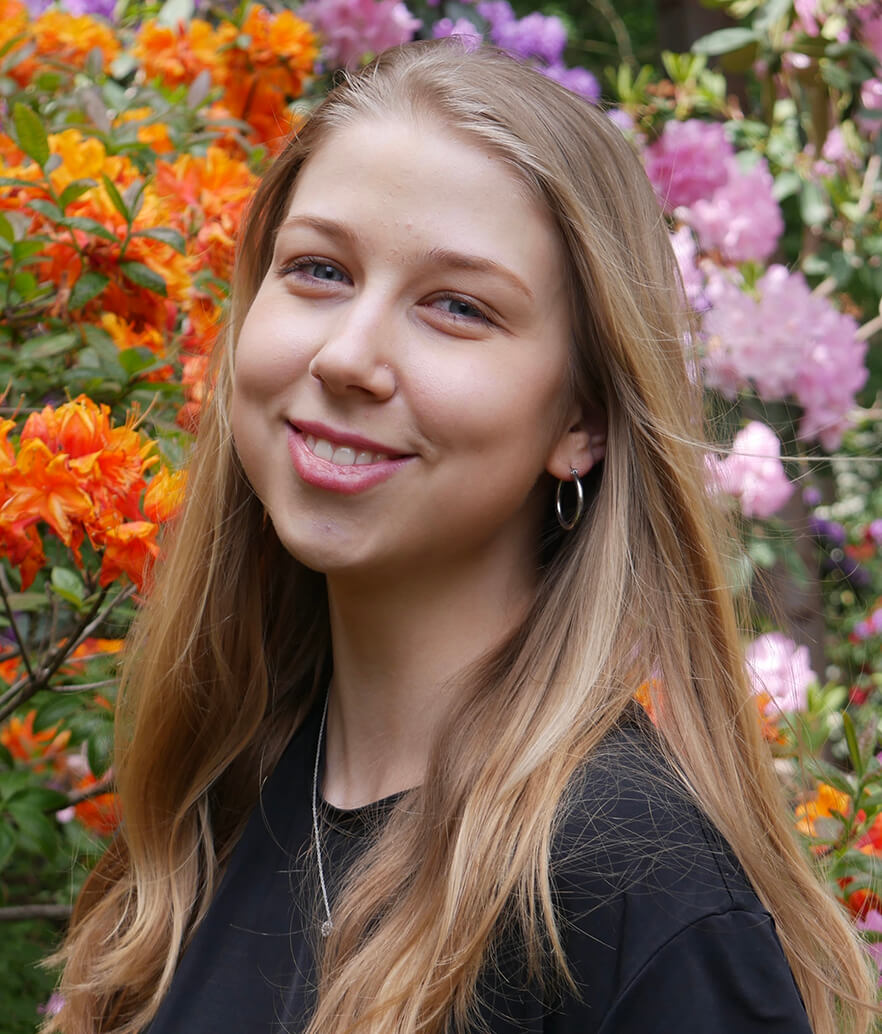 Fabia R. Koch
Fabia R. Koch
Email: f.r.koch@uva.nl
Affiliation:
University of Amsterdam
Department of Bacterial Cell Biology & Physiology
Science Park 904, 1098 XH Amsterdam, Netherlands
Education & Experiences:
I started my Bachelor’s degree in Biology at the University of Hamburg in 2019. Since my first lecture in microbiology, I became fascinated by the endlessly amazing things these tiny organisms can do. I then did my bachelor thesis in the group of Prof. Streit studying the quorum sensing system in Vibrio gazogenes. During my Bachelor experiences with molecular cloning techniques and fluorescence microcopy I discovered that microscopy became one of my favorite methods. Not only does it allow you to visualize microorganisms and cellular structures in incredible detail, but the images sometimes with several colors almost feel like scientific art.
I continued my journey with a Master’s degree at the University of Göttingen in Molecular Life Sciences. I was able to expand my laboratory skill set in several practical classes, two internships and a student research group. The first internship was in the group of Prof. Daniel where I worked on the impact of a ketogenic diet on the gut microbiomes of wildtype and knockout mice. The second internship was at the Max-Planck-Institute in the group of Prof. Rodnina focusing on in vitro reconstitution of translation and ribosome rescue reactions using Francisella tularensis ribosomes. The most valuable experience was with a student research group working in the lab of Prof. Stülke. We analyzed the master regulator PrfA for virulence in Listeria monocytogenes. Our group attended two conferences where I co-presented our research and we collaborated with Satorius on a new protein purification product.
I have always been interested in fundamental research that can be applied in medicine or the industry. At the BACELL conference I met my current PhD supervisor Prof. Hamoen and heard about the CLEAR project. The position combined my interests in fundamental microbiology research that can be applied in healthcare. I did an external master thesis on methods for cell wall porosity measurements in Bacillus subtilis already in the Hamoen lab in Amsterdam. After graduation I am now very happy to continue with the PhD on October 1st 2024 at the University of Amsterdam.
Objectives: To identify novel antimicrobial activities from variants of poorly explored classes of known metabolites and of metabolites predicted not to be associated with known classes.
Expected Results: 1) Chemical structures of at least 3 metabolites and 2) their antimicrobial activities of the identified molecules.
Position available at Naicons, IT | EURAXESS (europa.eu)
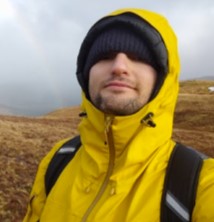 Pablo Chisbert
Pablo Chisbert
Education and experience:
I graduated with a BSc in Biochemistry and Pharmacology from The University of Strathclyde in Glasgow. For my thesis project I screened Actinobacteria extracts for antimicrobial substances active against ESKAPE pathogens.
I proceeded to complete an MSc in Industrial Biotechnology organised by the Industrial Biotechnology & Innovation Centre of Scotland (IBioIC). During my MSc placement I investigated the potential of including biomass-derived materials in hydrogels for drug delivery.
Later I moved into industry and worked for 3 years at MiAlgae Ltd, a biotechnology start-up based in Edinburgh that produces Omega-3 and other value-added products from industry byproducts. As part of the R&D and Tech Transfer teams I contributed to the development, optimisation, and scale-up of a bespoke fermentation platform, expanding upon the Scottish circular economy.
I am now excited to join Naicons Srl and the CLEAR doctoral consortium to work towards the discovery of antibiotics and other novel microbial natural products of industrial relevance.
Project brief overview:
This project will mine metabolomic data from the MICRO4ALL platform – a microbial database & gateway recently developed by Naicons Srl - and will use a paired omics approach to identify, purify, and characterise novel active antimicrobials to later determine their mode of action.
Project Description
Clostridioides difficile is the leading cause of antibiotic-associated diarrhea worldwide, contributing to significant mortality. This bacterium exhibits resistance to several beta-lactam antibiotics, which inhibit the transpeptidation of peptidoglycan, a crucial component of the bacterial cell envelope. C.difficile peptidoglycan has a unique composition, consisting of 3-3 cross-links catalyzed by L,D-transpeptidases (Ldts). These enzymes are poorly inhibited by beta-lactams, suggesting that their activity may underlie the observed antibiotic resistance. The C. difficile genome encodes three Ldts with canonical YkuD domains and two with VaW domains. Despite their structural and evolutionary differences, both enzyme classes perform the same transpeptidation reaction, offering intriguing insights into their functional convergence.
In my project, I will focus on determining the protein structures of C. difficile L,D-transpeptidases. This will involve protein expression and purification, crystallization, X-ray data collection at synchrotron radiation facilities, and analysis of protein-protein and protein-ligand interactions. Using insights from the catalytic mechanisms derived, I aim to design new molecules that specifically inhibit L,D-transpeptidase activity and assess the impact on sporulation and resistance to cell wall antibiotics in vancomycin-resistant C. difficile.
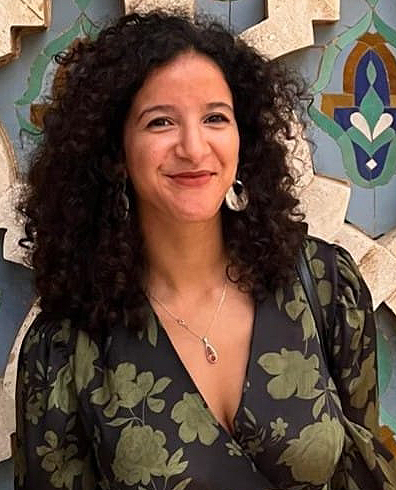 Sara Ait Ikene
Sara Ait Ikene
Email: sikene@iqf.csic.es
Affiliation:
Instituto de Química-Física Rocasolano
Department of Cristallography and Structural biology
Calle de Serrano 119
28006 Madrid
Education and Experience
I have a bachelor degree in Biological Science and a master degree in Molecular and Cell Biology. I conducted my bachelor's thesis at CIBIO within Professor Vito D’Agostino's laboratory. The internship focused on investigating the interaction between two proteins, TDP-43 and VAPB, linked to the development of amyotrophic lateral sclerosis (ALS) in humans.
During my master thesis I decided to focus on plant biology for research because I was always fascinated with their intricate biology and numerous possibility they offer. I wanted also to make an experience abroad, as I knew I would benefit from an international context and seeing new research realities. For these reasons I started an internship of 1 year in the laboratory of prof. Yasin Dagdas at the Gregor Mendel Institute in Vienna. The aim of this internship was to establish an evolutionary framework that elucidates the mechanisms by which conserved protein complexes, such as the exocyst, evolve over time and acquire novel functionalities within the cell while maintaining their original function. To accomplish this goal, I employed a trans-species approach, combining immunoprecipitation coupled with mass-spectrometry to study the interactome of the plant exocyst subunit, Exo70, using three model organisms: Arabidopsis thaliana, Marchantia polymorpha, and Chlamydomonas reinhardtii. After completing my master's degree, I participated in a three-month summer school at the laboratory of Prof. Jiri Friml at the Institute of Science and Technology Austria in Klosterneuburg, near Vienna. During this period, I explored the roles of MAKR 2/6 in auxin canalization and auxin activation of ROPs, utilizing Arabidopsis thaliana and Nicotiana benthamiana for my research.
In pursuing my PhD, I was eager to try something new from my previous studies, driven by my curiosity to learn more and desire to expand my expertise. During my master’s work, I was interested in structural biology, particularly Cryo-electron microscopy and X-ray crystallography, which were used by some colleagues. I want to dive deeper into this field and specialize in it because I find it intriguing to understand the complex architectures of biological molecules and their functional implications and for this reason I applied for a PhD position in the group of prof. Juan Hermoso in Madrid inside the CLEAR consortium.
Objectives: To demonstrate efficacy of computer assisted drug design (CADD) methods on antimicrobial targets in the bacterial envelope with focus on LD-transpeptidase from C. difficile. Preliminary synthetic optimization of hits to select most promising for further development.
Expected Results: 1) To have identified novel inhibitors of LD-transpeptidases of C. difficile and of two targets identified in the project; 2) To have derivatized hits obtained by analysis of at least one LD-transpeptidase.
Project Description
The liberal use of antibiotics in the past decades has resulted in a growth of antibacterial resistance. Gram-positive bacteria have shown to be able to acquire resistance to virtually all antibiotics, while at the same time, the arsenal of effective antibiotics is shrinking. The rise of multi-antibiotic resistant bacteria represents one of the most urgent challenges to global human health. The effects of antibiotic resistance are devastating, with at least 1.2 million yearly deaths worldwide.
Antibiotics like penicillin, target the bacterial cell wall synthesizing enzymes of the DD-transpeptidase class (Penicillin binding proteins, PBPs). These beta-lactams inactivate the DD-transpeptidase (PBP), thereby disabling their functioning. This renders bacteria unable to construct enough peptido-glycan bonds per second to constitute an effective cell wall. Loss of cell wall barrier function kills the bacterium.
Recent discoveries suggest that certain strains of gram-positive bacteria can employ another class of cell wall synthesizing enzymes, LD-Transpeptidases (LDts), in the construction of alternative peptido-glycan motifs. This bypasses the lethal effects of antibiotics that inactivate their PBPs. These bacterial LDt proteins seem to be unaffected by beta-lactam antibiotics that normally target PBPs. This secures survival of the bacterium through continued cell wall synthesis even when their DD-transpeptidases are taken out of action by (for instance) beta-lactam antibiotics as penicillin.
Recent studies have pointed towards the effectiveness of LD-transpeptidases to confer resistance to beta-lactam antibiotics in bacteria such as (but not limited to) Staphylococcus aureus, Mycobacterium tuberculosis, Clostridioides difficile.
Investigation of inhibitors towards LD-transpeptidases would therefore possibly result in finding novel inhibitors that provide an alternative to defeating drug-resistant strains of these gram positive bacteria.
In our research, I will employ computer aided drug design (CADD) to analyse protein models of LDts arising from models which include X-ray protein crystal structures from an array of species. These protein models will be applied to in silico docking studies of putative inhibitors of LDts. Modelling results will enable the design of inhibitors which will be synthesised and validated in enzymatic assay by project CLEAR partners from CSIC (Spain). The validated hits will be used as templates for design of improved analogues by input of co-crystallisation X-ray crystallography studies using LDts, performed by collaboration partners from CSIC (Spain). The designed compounds will be synthetically prepared leading to potent LDt inhibitors. These will be used as tool compounds for investigation of their antibacterial potency and will serve as leads for extended drug discovery programs.
In this project I will perform secondment research at the Institute of Physical Chemistry "Blas Cabrera" (CSIC) Madrid, Spain. At the department of Crystallography and Structural Biology in the research group of Prof. Dr. Juan A. Hermoso Domínguez where I will learn more about protein X-ray crystallography. Later in my PhD I will perform secondment research at the University of Copenhagen where I will apply bacterial studies to discovered lead compounds.
Novel inhibitors capable of defeating drug-resistant strains of these gram positive bacteria will yield us a significant victory in our fight against drug-resistant bacterial disease.
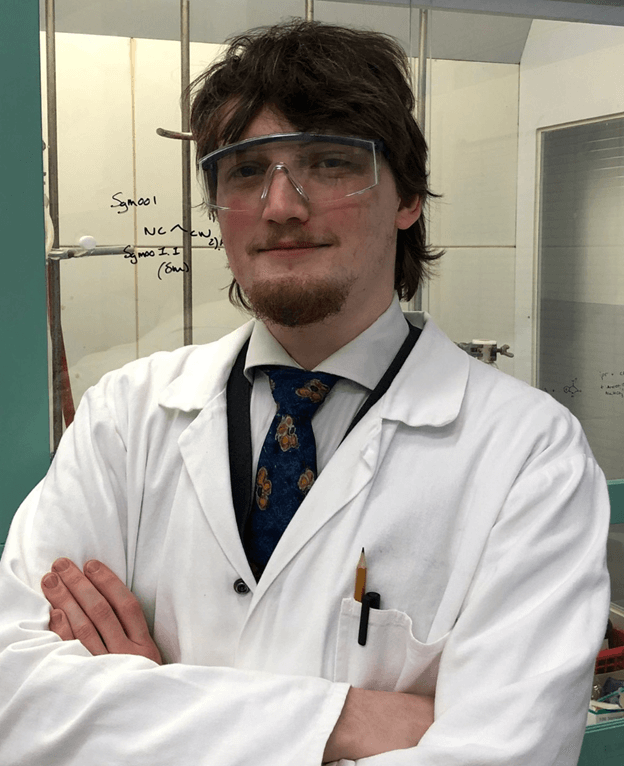 Sjoerd van der Gun
Sjoerd van der Gun
E-mail: sjoerd.van.der.gun@osi.lv
Affiliation:
Latvian Institute of Organic Synthesis
Aizkraukles iela 21
Vidzemes priekšpilsēta
Rīga, LV-1006
Education and Experience
I hold a Bachelors of applied science in Chemistry with minors in Analytical and Organic Chemistry, as well as a Masters of Science in Chemistry, with a specialisation in Research.
In the pursuit of my Bachelor's degree at Avans University ATGM (Breda), I delved into both practical and theoretical aspects of Organic Chemistry. I engaged in a diverse range of classes, while contributing to interdisciplinary research projects.
Across my BSc. and MSc. , I undertook three research internships, each contributing significantly to my growth as a researcher. One of the highlights of my Bachelors was a six-month internship in Japan, where I assisted the exploration of synthetic routes in a total synthesis project. In the Gousei research group at the Graduate School of Pharmaceutical Sciences under Prof. Dr. Takasu & Prof. Dr. Takikawa, I learned the fundamentals of exploratory chemical synthesis, as well as experiencing the unique culture and warm hospitality of Japan.
Building on the success of my internship in Japan, I further honed my research skills during a subsequent Internship spanning six months at the Radboud University, Nijmegen.
Here at Institute for Molecules and Materials in the Rutjes research group I explored the synthetic chemistry of octagonal heterocycles. Here I focused on investigating key reactions for the production of starting material for further photo-flow production of building blocks for orthogonal in vivo anti-tumor medication, which employed click-to-release chemistry.
Continuing the journey into my Master's program at the University of Leiden, amidst the challenges posed
by the pandemic, I followed a year of classes aimed at widening my skillset. I followed excellent classes on Biochemistry, Immunology and Theoretical Synthetic Chemistry. After which I followed a year-long research internship at the Overkleeft research group of the University of Leiden under Prof. Dr. Jeroen Codee.
During this work, I contributed to the production of promising epitope candidates for the development of glycoconjugate vaccines against drug-resistant s.aureus infections, through successful construction of a robust synthetic method. I finished my MSc. of Chemistry with a large literature thesis that focused on strategies for beating bacterial resistance through deception.
After graduating, I taught for a short period as a chemistry teacher's assistant at Mgr. Frencken College, where I had the privilege of sharing my passion for chemistry.
My interests in developing new synthetic methodologies and strategies in support of solving the problem of bacterial resistance will be central in my work at the Organic Synthesis Methodology group of Professor Doctor Aigars Jirgensons, in the Latvian Institute of Organic Science.
I approach the prospect of a PhD. with enthusiasm and a deep sense of gratitude for the opportunities that education has afforded me. This enthusiasm propels me to contribute meaningfully to the scientific community and, together with my colleagues in this Maria Skłodowska-Curie fellowship, find elegant answers to complex questions.
Objectives: To identify and characterize compounds that maintain ticagrelor antibacterial activity but are devoid of antiplatelet effect among a hundred of ticagrelor-derived pyrimidine compounds synthesized by ULiège. About twenty of these molecules, triazolo-pyrimidines and purines, display potential antibacterial activity as ticagrelor. All of these molecules are patented.
Expected Results: 1) Ten derivatives of ticagrelor with antibacterial activity but lacking the antiplatelet activity have been identified and 2) To derivatives have been characterized in detailed in in vivo assays.
 Emanuela Fedele
Emanuela Fedele
Email: emanuela.fedele@cmd-coat.com
Affiliation :
COAT
11 Avenue de l’Hôpital,
B34+3 4000-Liège (Sart Tilman)
Belgium
I am currently a PhD student and synthetic chemist at COAT in Liège, Belgium. My academic journey began in Italy, where I earned my bachelor’s degree in Chemistry at the University of Parma. It was there that I learnt to execute and design experiments. During my thesis on the “Optimization of TEMPO-mediated reactions for surface-oxidized cellulose nanocrystals” I developed my passion for the world of molecular structures and their functions, and the principles that rule reactions. This interest led me to pursue a master’s degree in Organic Synthesis at the University of Bologna.
During my time in Bologna, I had the opportunity to work in the laboratory of Professor Daria Giacomini, focusing on the synthesis of novel integrin ligands for the immune system. This experience not only allowed me to optimize synthetic strategies to achieve high-yield, high-purity products but also introduced me to the principles of structure-activity relationship (SAR) studies. My research aimed at targeting crucial receptors such as αLβ2 (CD11a/CD18), αMβ2 (CR3), and α4β1 (VLA-4), marking the beginning of my exploration into the fascinating intersection of chemistry and immunology.
As a recipient of the Erasmus + Scholarship for internship, I joined the SynBioc Research Group at Ghent University, where I worked for the first time in antibiotic resistance research. My work involved optimizing the chemical synthesis of novel beta-lactam-based antibacterial molecules. This experience has deepened my understanding of organic synthesis while addressing a critical global health challenge. I decided that I wanted to work in the field of AMR research. I therefore applied for the CLEAR project.
Now, as a synthetic chemist at COAT and a PhD student within the CLEAR project, I am excited to further explore the complex world of antibiotics. The prospect of gaining expertise in medical microbiology—working with bacteria, conducting tests to quantify their activity, performing SAR analyses, and studying the mechanisms of action of my synthesized compounds—thrills me. I aspire to take my research a step further by testing these molecules in vivo. This journey is both intriguing and fulfilling, as I put all my efforts to contribute with meaningful advancements in the field of antibiotic research. I am committed to pushing the boundaries of chemical research to develop innovative solutions.
Objectives: To determine the mode of action in penicillin/β-lactamase inhibitor killing of MRSA and MDRSE. To identify the optimal penicillin/β-lactamase inhibitor combinations (with and without other potentially potentiating drugs) and dosage regimens using checkerboard assays. To access the efficacy of the best penicillin/β-lactamase inhibitor combination(s) in in vitro and animal models of biofilm- and non-biofilm-related infections.
Expected Results: 1) The mode of action has been identified; 2) The efficacy of the best combination(s) has been tested.
Project Description
Methicillin-resistant S. aureus (MRSA) and methicillin-resistant S. epidermidis (MRSE) are major causes of difficult-to-treat, life-threatening infections worldwide. For example, MRSA alone is responsible for over 100,000 deaths and 3.5 million disability-adjusted life years annually, and it is categorized as “high” on the World Health Organization’s priority list of bacteria for which new antibiotics are urgently needed (Ranjbar and Alam 2023; World Health Organization 2024).
Penicillin and other β-lactams kill bacteria by inhibiting the transpeptidase (TP) activity of penicillin-binding proteins (PBPs), which catalyze the final step in bacterial cell wall biosynthesis: the crosslinking of peptidoglycan (PG). In MRSA and MRSE, decreased susceptibility to β-lactams is conferred by two primary mechanisms: (1) enzymatic cleavage of the amide bond in the β-lactam ring of penicillinase-labile penicillins (e.g., penicillin G), mediated by blaZ-encoded β-lactamases (also known as penicillinases); and (2) expression of mecA- or mecC-encoded PBPs (PBP2a and PBP2c, respectively), which have decreased affinity for most β-lactams, including penicillinase-stable penicillins (e.g., methicillin and oxacillin) and cephalosporins (e.g., cefoxitin). Additionally, certain MRSA and MRSE lineages form strong biofilms on inert surfaces such as central venous catheters, prosthetic joints, and other indwelling medical devices, further enhancing their resistance to antibiotics compared to planktonic cells.
Recent studies (Harrison et al. 2019; Ba et al. 2023) have shown that several MRSA and MRSE lineages display cryptic susceptibility to penicillins when used in combination with a β-lactamase inhibitor such as clavulanic acid, suggesting that penicillin/β-lactamase inhibitor combinations could be promising therapeutic candidates. Genomic analysis revealed that this phenotypic susceptibility is due to unique mutations in the mecA promoter region, which lower the expression of penicillin-binding protein 2a (PBP2a), along with two mutually exclusive amino acid substitutions, Met122 → Ile (M122I) and Glu246 → Gly (E246G), located in the allosteric domain of PBP2a.
The aims of my research project are (1) to determine the mode of action of penicillin/β-lactamase inhibitor combinations in inhibiting the growth of MRSA and MRSE; (2) to identify the optimal penicillin/β-lactamase inhibitor combinations, both with and without other potentially potentiating drugs, as well as appropriate dosage regimens, using checkerboard assays; (3) to examine the impact of selected penicillin/β-lactamase inhibitor combinations on S. aureus cell wall physiology; and (4) to assess the in vivo efficacy of the most effective penicillin/β-lactamase inhibitor combinations identified through in vitro testing and animal models of both biofilm- and non-biofilm-related infections.
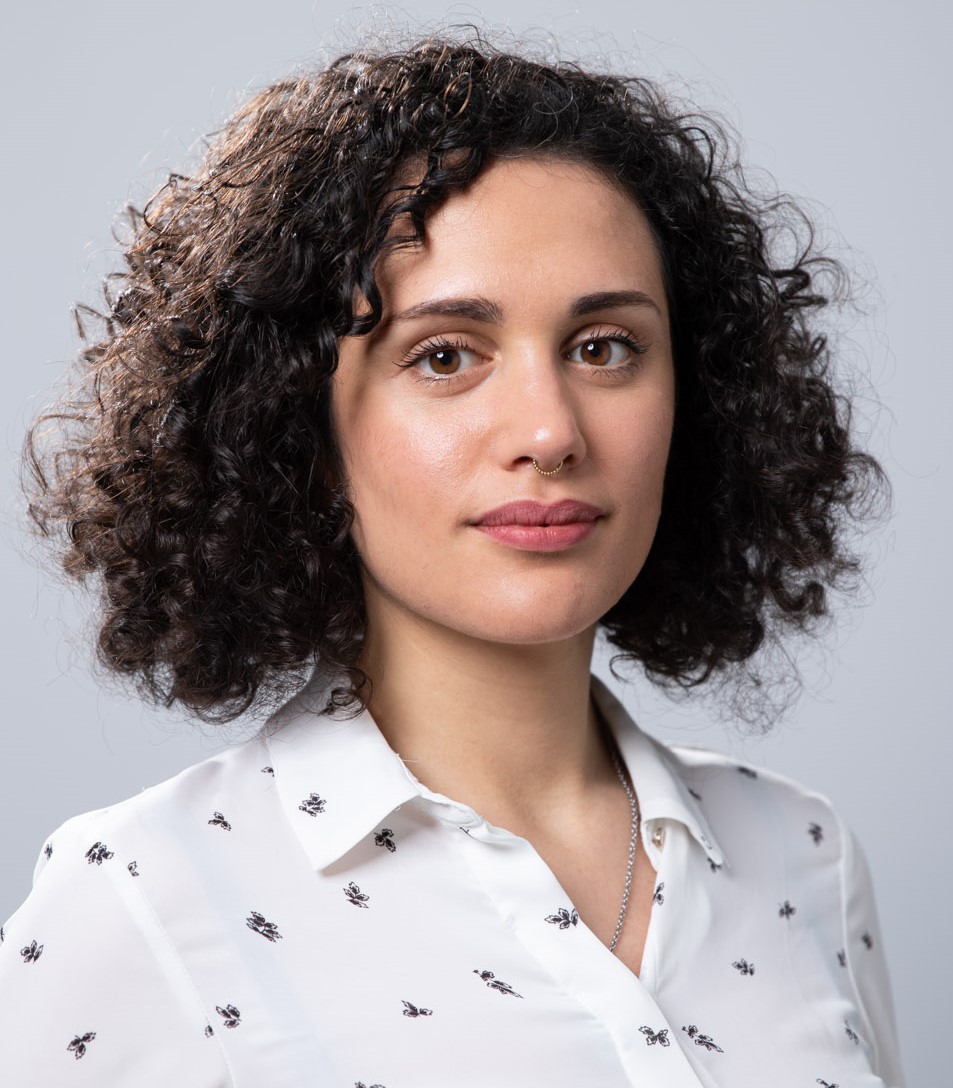 Maria Protano
Maria Protano
Education and Experience
I hold both a Bachelor’s and a Master’s degree in Biotechnology, each earned with distinction from Tor Vergata University of Rome and the University of Padua in Italy, respectively. Driven by curiosity and a passion for new intellectual challenges, I gained diverse research experience across four labs in three different countries (Italy, Czech Republic, Austria) over the past seven years.
My early research experience included investigating muscle regeneration in a Duchenne muscular dystrophy model at Tor Vergata University during my Bachelor’s studies and assessing metronidazole resistance in Bifidobacterium species as part of my Master’s research. The latter work began during my undergraduate studies at the Czech University of Life Sciences (CULS) in Prague and continued as a postgraduate research intern at the University of Natural Resources and Life Sciences (BOKU) in Vienna.
Since I finished my Master’s, I had the desire to pursue a PhD, but I also wanted to broaden my research skills before embarking on such a challenging path. Therefore, in 2021, I transitioned to industry and for 2.5 years I worked as Research Associate at BioNTech R&D Austria. There, I took part in the development of phage-derived endolysins, a novel class of antibacterial drugs designed to treat infections where antibiotics fail to cure or destroy the resident microbiota. My responsibilities included characterizing Gardnerella-specific lysins and evaluating other novel lysin candidates using diverse assays, such as growth inhibition, time-kill, dye release, and biofilm assays. I was also involved in the development of bioanalytical methods compliant with EMA guidelines for the quantification of pharmaceutical analytes of proteinaceous nature in biological matrices. This role further involved high-throughput data analysis in pharmacokinetics and enzyme kinetics, as well as authoring a key preclinical study report.
Working in the cutting-edge field of lysin development sparked a deepening passion for research that ultimately inspired me to return to academia to pursue a PhD. Accepting the position with my current supervisor, Jesper Larsen, took me from Vienna to Copenhagen, where I joined the enthusiastic MSCA doctoral network CLEAR. I am grateful for this opportunity, as I feel I’m exactly where I need to be to grow as an independent scientist and contribute to advancing our understanding of antimicrobial resistance.
Objectives: To determine if combined use of antibiotics and phages can enhance bacterial killing with reduce resistance development, and determine the overlaps in molecular targets of phages and antibiotics, respectively.
Expected Results: 1) Identification of combination treatments that enhance bacterial killing with limited resistance development 2) Knowledge on bacterial pathways that may be triggered to enhance phage therapy against G+ pathogens.
PhD9 – Phage combination therapy
Project Description
Effective treatment of staphylococcus aureus is today currently hindered by the emergence of multi-drug resistant variants and have become a global issue for the clinic. Previously, the use of the drug methicillin and vancomycin was the last line of treatment, however, with the emergence of methicillin- and vancomycin resistant staphylococcus aureus, our options today are limited. The need for new antibiotics and new therapeutic alternatives therefor must be investigated to combat this pressing issue. One possibility is phage therapy, a previous used treatment alternative which vanished with the emergence of antibiotics but have recently reemerged to become a promising candidate. By using bacteriophages that specifically infect staphylococcus aureus, we can alleviate the occurrence of new mutations from use of antibiotics and hopefully solve this issue.
The aim of my project is to identify bacterial pathways or factors that are determining for the efficacy of phage infection and thereby for the use of phages in phage therapy. To do so, I will screen for a large library of drugs which could support phage infection and identify bacterial pathways that may be triggered to enhance phage mediated killing. Hopefully, this would also lead to identification of secondary phage receptor sites as the wall-teichoic acid is currently the only known receptor site for phage uptake. My Secondment will be conducted at NAICONS (Italy) which is where I will be screening their library of drugs for suitable candidates that could enhance phage killing.
Frederik Pedersen
Email: f.pedersen@sund.ku.dk
Affiliation:
University of Copenhagen
Department for Veterinary and Animal Sciences
Stigbøljen 4
1870 Frederiksberg C
Education and Experience:
In June 2021, I acquired a BSc in biology at Linköping’s University, Sweden. During my bachelor’s, I got to experience everything related to cell- and molecular biology, pharmacology, microbiology and physiology. At the time, I really enjoyed medical physiology and therefore made it my specialization. For my bachelor’s thesis, I joined the group of Professor Jordi Altimiras in organ physiology. The project was based on previous data which indicated to survive birth, the organs of neonates must drastically develop to survive leaving the egg or the mother’s womb. My project was therefore to investigate and confirm whether there was a difference in organ mass leading up to hatching by dissecting and analyzing red junglefowls (Gallus Gallus) pre- and post-hatchlings.
I’ve always loved to learn new things and explore new areas and, I knew from my bachelor’s that I also had a big interest for systems biology, immunology and microbiology. With this, I wanted to expand on my knowledge in medical physiology. I therefore achieved in 2023 a master’s in Immunology and Microbiology with an emphasis on host-pathogen interactions at Uppsala University, Sweden. During my Master’s, I joined Associate Professor Erik Holmqvist’s group at Uppsala University in molecular microbiology. My project revolved around post-transcriptional regulation of Salmonella pathogenicity Island 2 (SPI-2), one of the key regions of genes involved in Salmonella pathogenesis. More specifically, my project was to investigate whether there was an interaction between the global RNA binding proteins Hfq and ProQ on the phoP 5’UTR. My work also led me to investigate the small RNA ArcZ, to see if it repressed the expression of phoPQ mRNA and if the binding was dependent on Hfq.
During and after my master’s studies, I also worked in the industry for Olink Proteomics as a laboratory Engineer in proteomics. I always knew I wanted to pursue a PhD and knew it had to be related to microbiology and host-pathogen interactions. After a year in the industry post-graduating, I finally found a PhD I really wanted and started 1st of May 2024 in Hanne Ingmer’s group at Copenhagen University as part of the CLEAR project.
Objectives: To develop novel phage based endolysins as antimicrobials against C. difficile and MRSA
Expected Results: 1) At least four endolysins discovered with efficacy against MRSA and C. difficile and 2) two endolysins characterized in gut models and by 3D structure (together with PhD5).
Project Description
Novel antimicrobials against Clostridioides difficile and methicillin-resistant Staphylococcus aureus are urgently required as the prevalence of antibiotic-resistant strains of these pathogens increase globally. This project is dedicated to developing bacteriophage-derived endolysins as novel antimicrobials against C. difficile and methicillin-resistant S. aureus. Endolysins are bacteriophage-encoded peptidoglycan hydrolases that allow for the digestion of the peptidoglycan layer of bacterial cells during the lytic lifecycle of phages. Endolysins are highly conserved proteins in phage genomes and are thought to have evolved alongside bacteria to maintain conserved biological function. These proteins may be a practical alternative to traditional antibiotics for eliminating specific bacteria, without compromising the viability of commensal microbes in the same environment.
The aim of this project is to characterize two endolysins with activity against C. difficile and methicillin-resistant S. aureus. Recombinant engineering techniques, including gene cloning and transformation, and protein purification methods will be used to express and isolate endolysins. Lytic activity of endolysins will be assessed in monoculture assays involving target bacteria as well as in established microbiota experiments to assess microbial community dynamics following endolysin treatment. Broader aspects of endolysin structure and function will be studied during secondments to CSIC in Madrid and CORBION in Amsterdam where X-ray crystallography analysis and activity in commercial products will be evaluated.
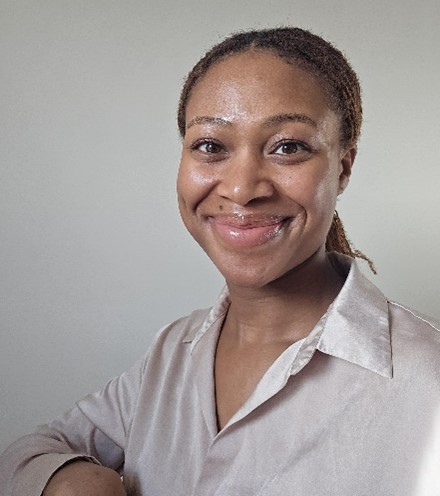 Ceylon Simon
Ceylon Simon
E-mail: csimon@ucc.ie
Affiliation:
APC Microbiome Ireland
University College Cork, T12 YT20
Ireland
Education and Experience
After completing a Bachelor of Medical Sciences with an honors specialization in Microbiology and Immunology from Western University in London, Ontario, Canada, I pursued a Master of Science in Food Science (Food Microbiology) at the University of Guelph in Guelph, Ontario, Canada.
During my formative years, I gained foundational knowledge in the field of microbiology and skills in scientific research. This developed into an interest in host-pathogen interactions and the complexity of the human gut microbiome. In my master’s thesis project, I tracked changes in a simulated human gastrointestinal environment following the introduction of high and low Salmonella enterica isolates. The project allowed me to acquire further skills in microbiome analyses and metabolomics.
Following my master’s degree, I transitioned to clinical research where I worked at Mount Sinai Hospital in Toronto, Canada as a Research Coordinator and Microbiology Laboratory Technician for the University of Toronto Microbiota Therapeutics Outcomes Program (MTOP). Specializing in fecal microbiota transplantation (FMT) at MTOP, I steered the microbiology screening tests for stool donors and completed FMT preparation for administration to recipients.
My work at MTOP expanded my interest in microbiome therapeutics and inspired my return to academia and the pursuit of my PhD. I am now excited to be a postgraduate researcher at University College Cork, APC Microbiome Ireland and a fellow in the CLEAR MSCA doctoral network. In my current role, I am working to develop bacteriophage-based endolysins as novel antimicrobials for gastrointestinal and skin surface-associated pathogens.


RESEARCH PROGRAM
The research program addresses the challenge of Gram-positive bacterial pathogens such as methicillin resistant Staphylococcus aureus (MRSA) and proposes that the bacterial cell envelope offers novel possibilities for antimicrobial therapy in addition to the well-known B-lactams. The program is based on unique findings that allow innovative and yet feasible approaches involving 1) identification of novel targets in the cell envelope and lead structures of novel agents, 2) re-sensitizing resistant bacteria to existing cell wall antibiotics, and development of novel therapies acting via the cell envelope.
TRAINING PROGRAM
The training program combines a broad range of scientific disciplines such as molecular biology, biochemistry, structural biology, screening technologies, pre-clinical testing with complementary courses in innovation, market potential and business strategies ensuring that the PhDs will be highly competitive for both top European research institutions and the pharma/biotech job market.
The research training is hosted by universities with a strong track record of graduate training as well as by SMEs with dedicated research activities in the field and it is composed of an ambitious scientific program flanked by essential generic training courses with ample opportunity for networking at network meetings, conferences, and shared secondments.
The ambition of CLEAR is to train young researchers to be prepared for the challenges of tomorrow while today provide excellent research with scientific and societal impact.

